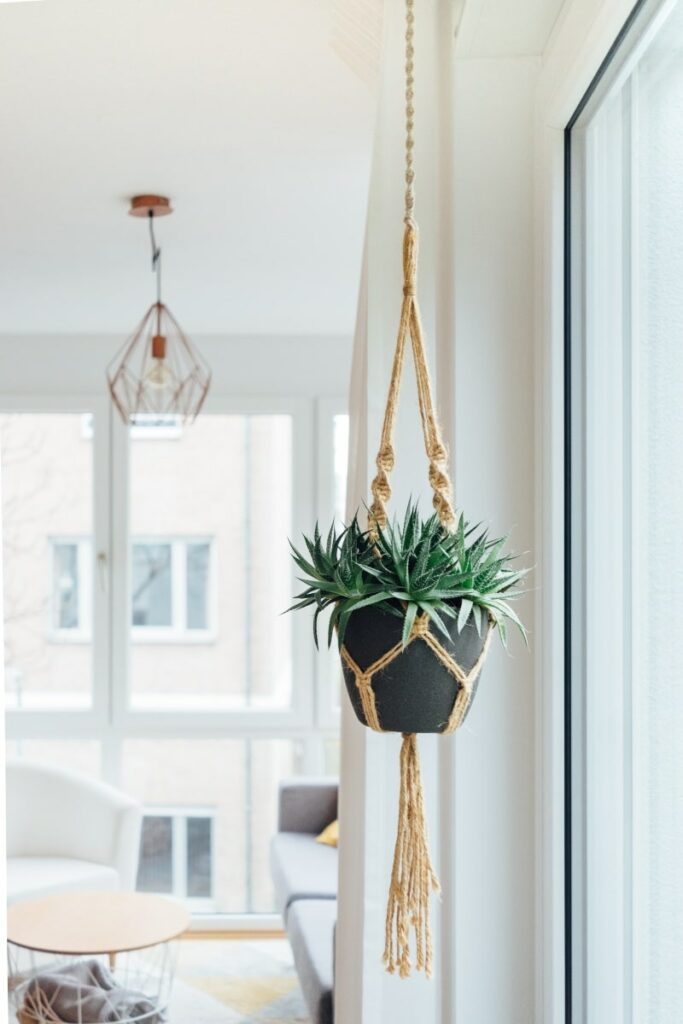Trailing – or hanging – plants, oh how they captivate the senses! These botanical beauties are a true delight to behold, with their long, cascading vines that exude elegance and boho vibes. Whether you’re looking to spruce up your garden or add some greenery to your indoor space, trailing plants are the perfect choice. They’re versatile, too, coming in a wide range of shapes, sizes, and colors that will leave you spoilt for choice. From hanging baskets to window boxes, or even as ground cover, these plants are a must-have for any gardener. Whether you’re a seasoned green thumb or just starting out, there’s a hanging plant that’s perfect for you. So, let’s get started and discover the true beauty of these botanical wonders!
Caring for Hanging and Trailing Plants
Trailing plants are a fantastic addition to any indoor space. They add a vertical level of interest, and are perfect for spaces where a floor or table planter may not have enough room. They’re a great addition when space is tight or the perfect window may not be able to fit a traditional plant pot.
First, their aesthetic appeal is undeniable. Trailing plants and their containers are visually stunning and can add a touch of elegance and beauty to any space. With a wide range of colors, shapes, and sizes, they are a versatile option for any design scheme.
Second, trailing plants are perfect for small spaces as they grow downwards, taking up less space than other plants. They are ideal for hanging baskets, window boxes, and vertical gardens, making them a space-saving solution.
Third, trailing plants are known for their air-purifying properties. They absorb pollutants and toxins from the air, making them a great choice for indoor spaces. This makes them an excellent option for those who want to improve the air quality in their homes.
Trailing plants are also low maintenance and easy to care for. They require minimal upkeep, making them perfect for busy individuals who want to enjoy the benefits of plants without spending too much time on maintenance.
Lastly, trailing plants can be used as a natural privacy screen, creating a barrier between you and your neighbors. They can also be used to cover unsightly walls or fences, making them a versatile addition to any space.
Overall, trailing plants are a fantastic addition to any space, offering a range of benefits from their aesthetic appeal to their air-purifying properties. So why not add some trailing plants to your garden or indoor space today?
Factors to Consider When Choosing Hanging Plants
When it comes to selecting the most suitable trailing plants for your garden or indoor space, there are a plethora of factors to take into account. Here are some of the most crucial things to keep in mind:
1. Light Requirements: The light requirements of trailing plants vary significantly. Some prefer basking in full sun, while others thrive in partial shade. It is imperative to select a plant that will be content with the amount of light available in your space.
2. Watering Needs: The watering needs of trailing plants are not uniform. Some require more frequent watering than others. If you are pressed for time and cannot devote much attention to plant care, it is advisable to choose a plant that can withstand a bit of neglect.
3. Growth Rate: The growth rate of trailing plants is another crucial factor to consider. Some grow at a breakneck pace and can quickly take over a space, while others grow more slowly and are better suited to smaller areas. It is essential to contemplate how much space you have available and how quickly you want your plant to fill it.
4. Soil Type: The soil requirements of trailing plants are diverse. Some prefer well-draining soil, while others prefer soil that is rich in organic matter. It is vital to select a plant that will be content with the type of soil you have available.
5. Maintenance: The maintenance requirements of trailing plants are not uniform. Some require more maintenance than others. It is crucial to consider how much time and effort you are willing to devote to plant care before selecting a plant.
By taking these factors into consideration, you can select the best trailing plants for your space and ensure that they thrive for years to come.
Top 10 Trailing Plants for Beginners
If you’re a novice gardener, searching for some easy-to-grow trailing plants, then you’re in luck! Here are the top 9 options to consider, each with their own unique characteristics and preferences.
Pothos Marble Queen
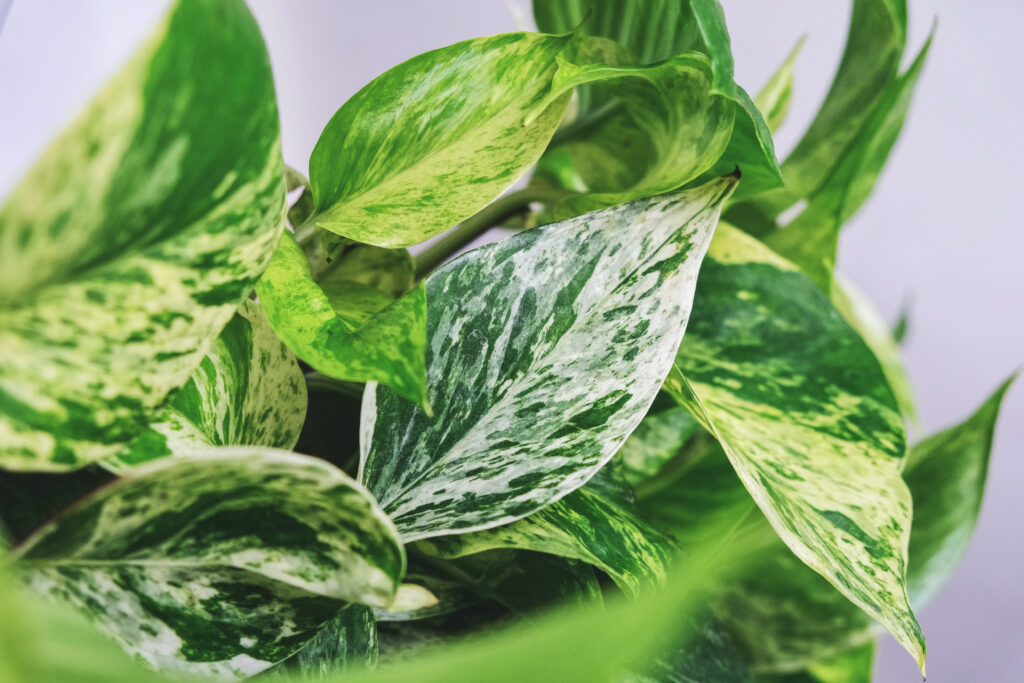
First up, we have the Pothos Marble Queen, a popular houseplant that can thrive in low light to bright indrect light. Its long, trailing vines can grow up to several feet long, making it a great option for those looking to add some greenery to their space. It’s variegated cream and green leaves also make this plant a show-stopper for any room.
String of Pearls
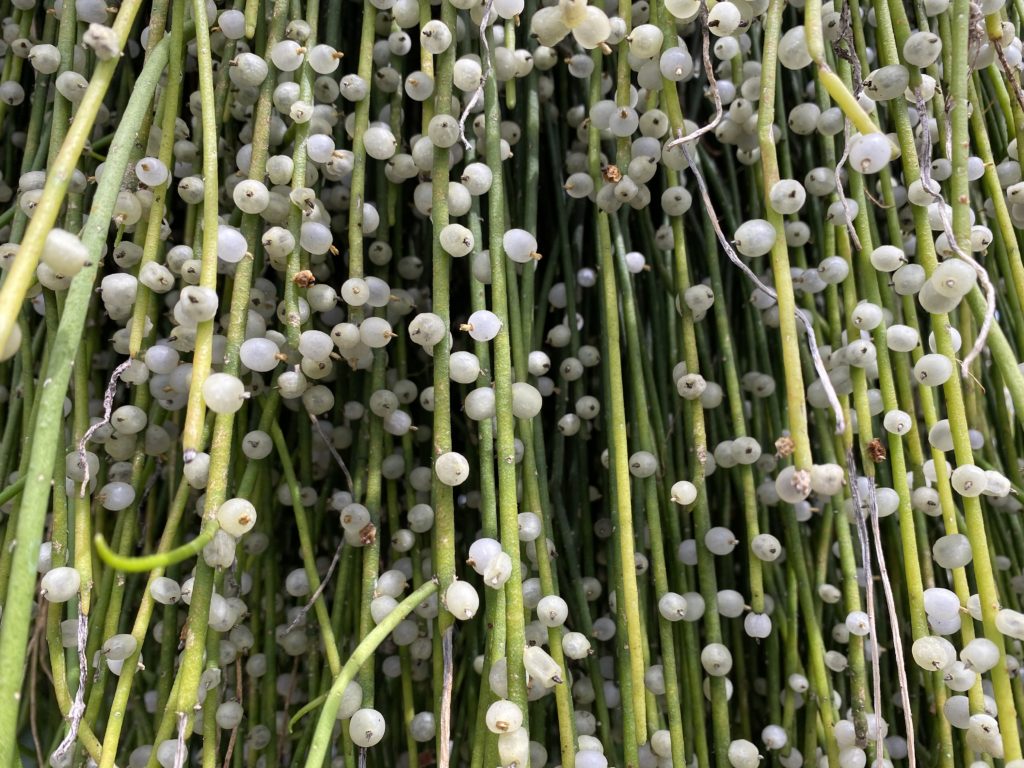
Next, we have the String of Pearls, a succulent with small, round leaves that resemble pearls on a string. It prefers bright, indirect light and well-draining soil, making it a great option for those with a sunny windowsill.
Oak Leaf Ivy
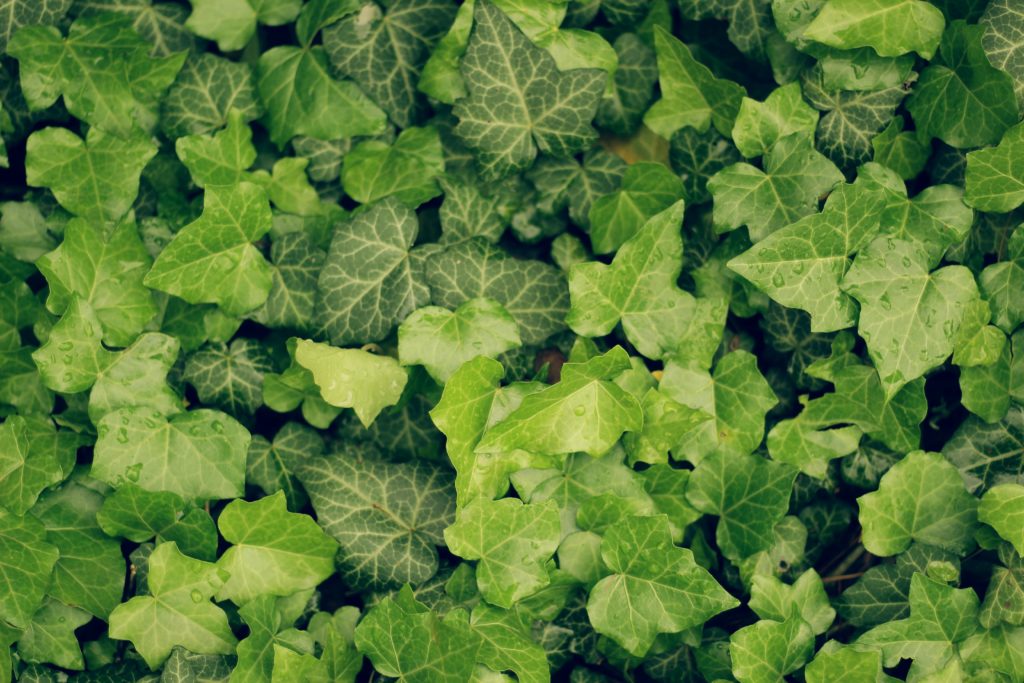
Moving on, we have the classic Oak Leaf Ivy, a trailing plant that’s great for adding a touch of green to any space. It prefers bright, indirect light and moist soil, making it a versatile option for a variety of environments.
Spider Plant
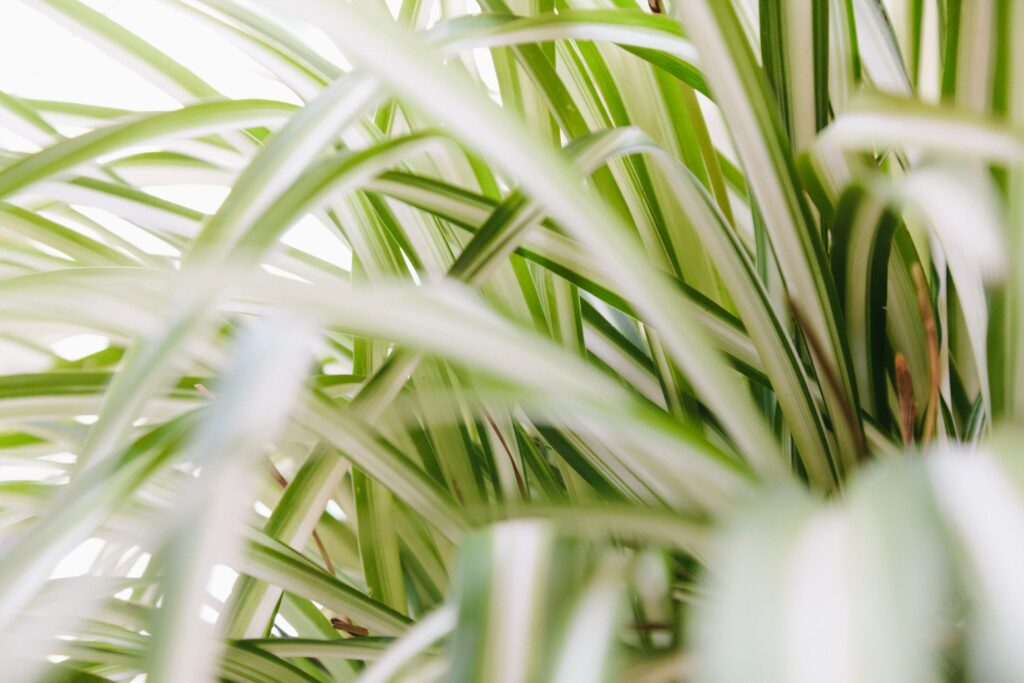
The Spider Plant is another easy-to-grow option, producing long, thin leaves that arch gracefully. It prefers bright, indirect light and well-draining soil, making it a great option for those with limited space. It’s also known to be a great air purifier.
Tradescantia Pink Panther
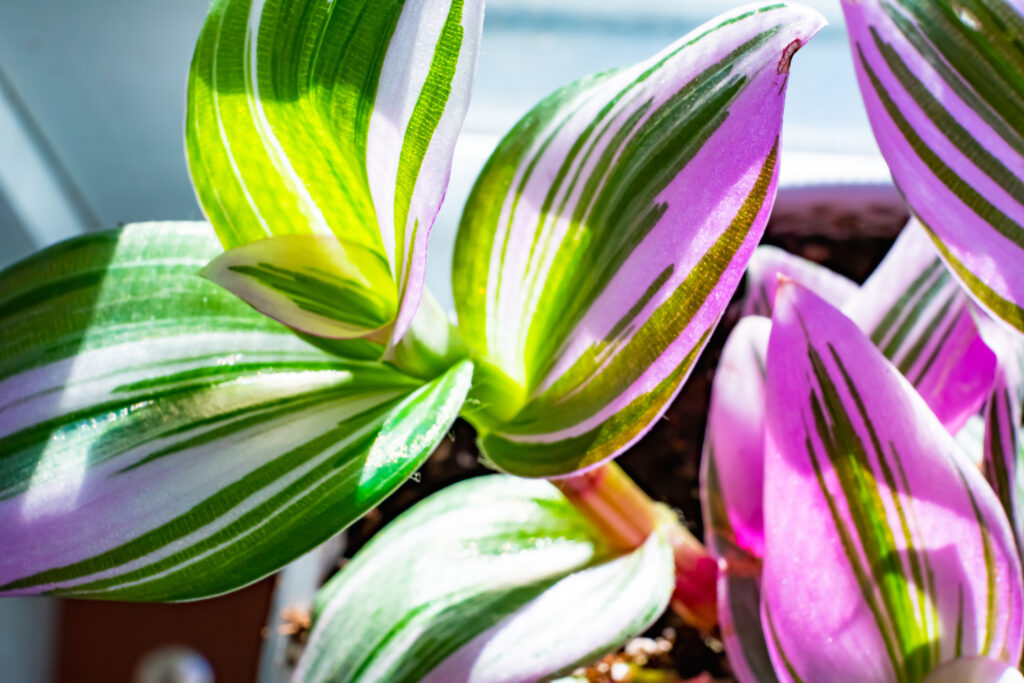
For a pop of color, consider the Tradescantia, a colorful plant with variegated leaves in shades of green, purple, and pink. It prefers bright, indirect light and moist soil, making it a great option for those looking to add some vibrancy to their space.
Golden Pothos
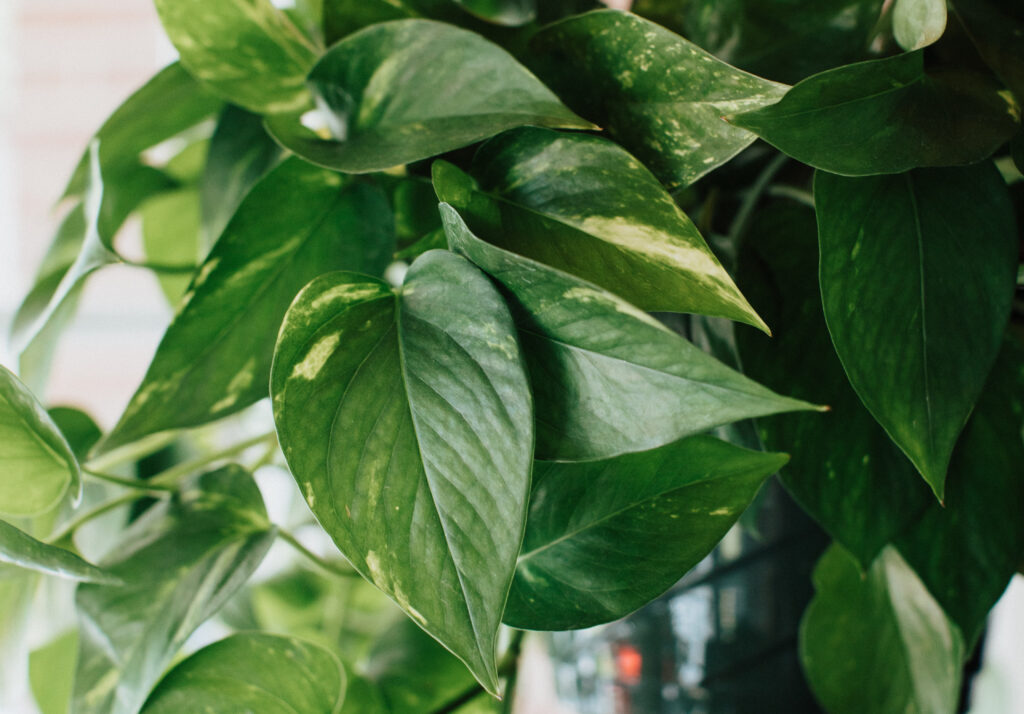
The Green Pothos is another variety of Pothos, with stunning all-green leaves. It’s easy to care for and can tolerate low light, making it a great option for those with less-than-ideal growing conditions.
String of Hearts
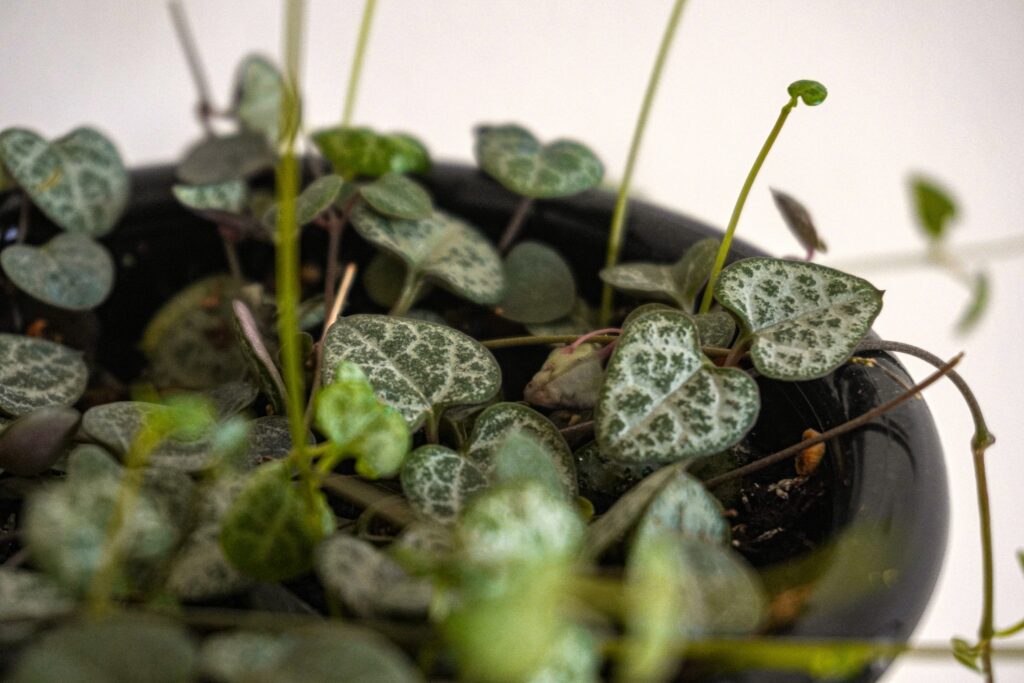
For a delicate touch, consider the String of Hearts, a plant with heart-shaped leaves that trail down long vines. It prefers bright, indirect light and well-draining soil, making it a great option for those looking to add some romance to their space.
Philodendron Brasil
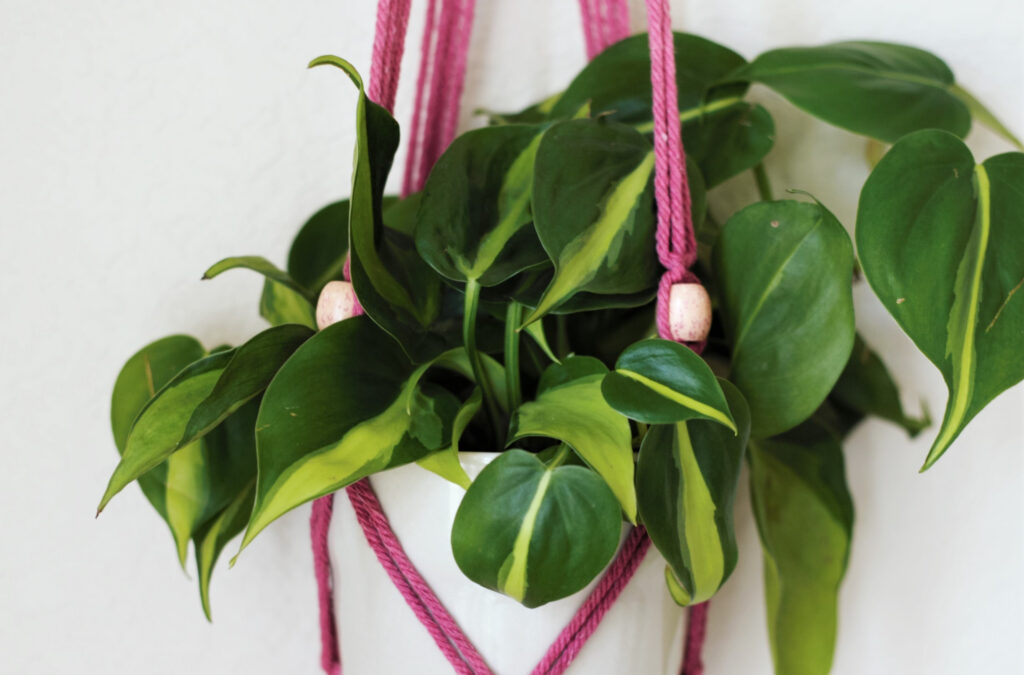
The Philodendron Brasil is a tropical plant with large, glossy leaves with beautiful neon green streaks that create stunning contrast with its dark green leafy outlines. It prefers bright, indirect light and moist soil, making it a great option for those looking to add some drama to their space.
Bonus Plant Idea: Nasturtium
For an edible option, consider the Nasturtium, a plant that produces colorful flowers and trailing vines that can be trained to climb trellises or spill over containers. It prefers full sun and well-draining soil, making it a great option for those looking to add some flavor to their space.
How to Care for Trailing and Hanging Plants
Adding trailing plants to your garden or indoor space is a fantastic way to bring in some greenery and create stunning hanging baskets or cascading displays. However, it’s important to remember that these plants require proper care to thrive. Here are some tips to help you care for your trailing plants:
Watering
Trailing plants need regular watering, but it’s crucial not to overdo it. The soil should be moist but not waterlogged. Depending on the plant and the environment, watering once a week may be sufficient, but it’s always best to research the specific needs of your plant.
Light
Most trailing plants prefer bright, indirect light, but some, like ivy, can tolerate low light conditions. It’s essential to understand the specific light requirements of your plant and place it in an appropriate location.
Fertilizer
Regular fertilization is beneficial for trailing plants. During the growing season, use a balanced fertilizer every two to four weeks. However, it’s crucial to follow the instructions on the fertilizer package and avoid over-fertilizing, which can harm the plant.
Pruning
Trailing plants can become leggy if they are not pruned regularly. To encourage bushier growth, trim back excessively long stems and prune any dead or damaged leaves and stems.
Pests and Diseases
Trailing plants are susceptible to pests and diseases, so it’s essential to keep an eye out for any signs of trouble. Spider mites, mealybugs, and scale insects are common pests that can infest these plants. If you notice any signs of infestation, treat the plant with an appropriate insecticide. Additionally, root rot and powdery mildew are diseases that can affect trailing plants, so it’s crucial to keep the soil well-drained and avoid overwatering.
By following these tips, you can ensure that your trailing plants remain healthy and beautiful for years to come.
Propagating Your Hanging Plants
Trailing plants are a fascinating species that can be propagated with ease. This means that you can effortlessly create new plants from your existing ones, which is fantastic if you want to expand your collection or share your plants with friends.
There are several ways to propagate trailing plants, including stem cuttings, division, and layering. Stem cuttings are the most common method and involve taking a cutting from the parent plant and rooting it in soil or water. Division involves separating the parent plant into smaller sections and replanting them, while layering involves encouraging a stem to root while still attached to the parent plant.
To propagate a trailing plant using stem cuttings, simply take a cutting from the parent plant that is around 4-6 inches long and has several leaves. Remove the lower leaves from the stem and dip the cut end in rooting hormone. Plant the cutting in a pot filled with moist soil and keep it in a warm, bright spot. Within a few weeks, the cutting should start to grow roots and new leaves.
Propagation is a great way to keep your trailing plants healthy and thriving, and it’s also a fun way to experiment with different varieties and create new combinations. With a little patience and care, you can easily propagate your favorite trailing plants and enjoy their beauty for years to come.
Common Problems (and Solutions)
Trailing plants are a beautiful addition to any garden or indoor space, but they come with their fair share of problems. Here are some of the most common issues that you may encounter and solutions to help you overcome them.
First, overwatering is a major problem that can lead to root rot, which can be fatal to the plant. To avoid overwatering, make sure that the soil is well-draining and that you allow the soil to dry out slightly between waterings. This is crucial to ensure that your plant remains healthy and vibrant.
Second, pests such as spider mites, mealybugs, and scale insects can wreak havoc on your trailing plants. To prevent pests, make sure that you keep your plants clean and free of debris. You can also use insecticidal soap or neem oil to control pests. This will help to keep your plants looking their best and prevent any damage from pests.
Third, lack of light can be a major issue for hanging plants. They require a lot of light to thrive, and if they don’t get enough, they may become leggy and weak. To solve this problem, make sure that your plant is placed in a location that receives bright, indirect light. This will help to ensure that your plant remains healthy and strong. Watch the light angles of your room. Hanging containers kept higher may not receive as much light as floor plants depending on your window shape and exposure.
Finally, fungal diseases such as powdery mildew and leaf spot can also be a problem for hanging plants. To prevent fungal diseases, make sure that you keep your plant clean and dry. You can also use a fungicide to control fungal diseases. This will help to keep your plants looking their best and prevent any damage from fungal diseases.
By being aware of these common problems and taking steps to prevent them, you can ensure that your plants stay healthy and beautiful in your space.
Conclusion: Adding Trailing Plants to Your Home Collection
In the grand scheme of things, it’s quite clear that incorporating trailing plants into your home décor is a fantastic way to infuse vitality and vibrancy into any given space. These plants are not only visually appealing, but they also offer a plethora of benefits, such as the ability to purify the air and reduce stress levels. With an abundance of options available, it’s a breeze to find a trailing plant that aligns with your personal style and preferences. Whether you opt for a timeless ivy or a chic string of pearls, these plants are guaranteed to elevate the aesthetic of your home. So, why not take the plunge and introduce some trailing plants into your décor? You’ll undoubtedly reap the rewards!
Frequently Asked Questions
What are trailing plants?
Trailing plants are plants that grow horizontally along the ground or hang down from a container or hanging basket. They are often used for their decorative value and can add a lush, cascading effect to any garden or indoor space.
What are the best trailing plants for indoor use?
Some of the best hanging plants for indoor use include pothos, spider plant, string of pearls, English ivy, and philodendron. These plants are easy to care for and can thrive in a variety of lighting conditions.
What are the best trailing plants for outdoor use?
Some of the best hanging plants for outdoor use include trailing petunias, sweet potato vine, creeping jenny, and lobelia. These plants are great for adding color and texture to hanging baskets, window boxes, and garden beds.
How do I care for trailing plants?
Caring for trailing plants depends on the specific plant, but in general, they require regular watering, fertilization, and pruning. It’s important to make sure they have proper drainage and are not overwatered. Trailing plants also benefit from occasional misting to increase humidity.
Can trailing plants be propagated?
Yes, many trailing or hanging plants can be propagated through stem cuttings or by dividing the plant. This is a great way to create new plants and expand your collection.

